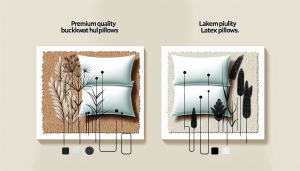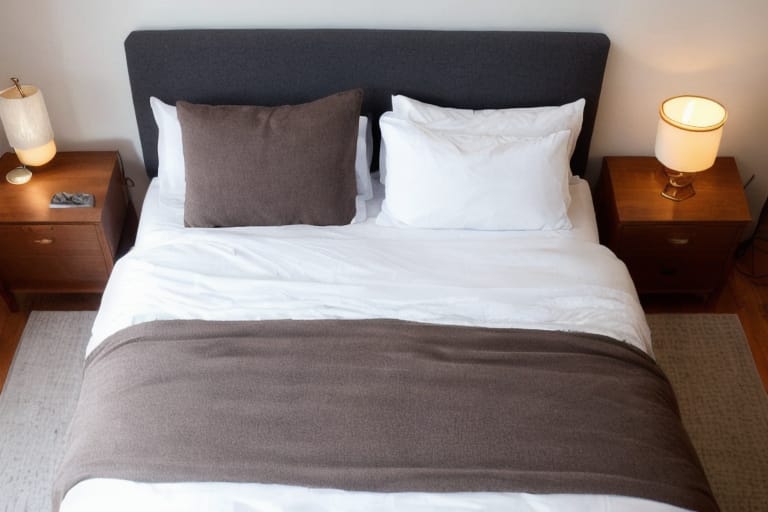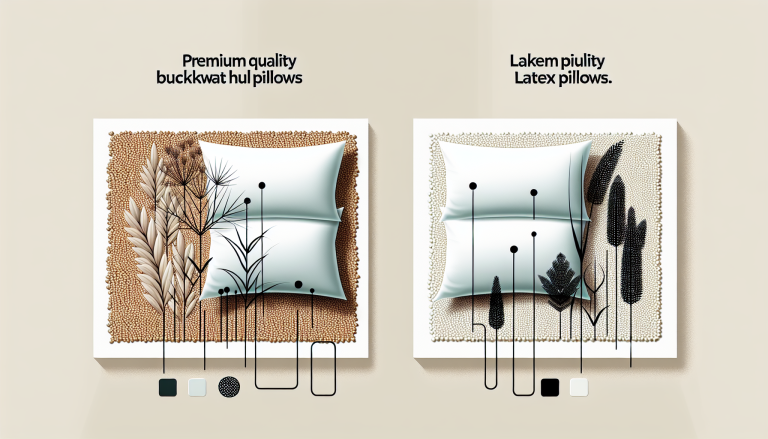Have you noticed your once pristine white down comforter taking on a yellowish tinge? This common phenomenon can occur for various reasons. Don’t despair! In this beginner’s guide, we’ll explore the causes of yellowing down comforters and provide tips on how to prevent it.
An Introduction to Down Comforters
Before diving into yellowing issues, let’s review some down comforter basics.
What Is a Down Comforter?
A down comforter is a bedding item filled with the fine, fluffy clusters and plumules that come from duck or goose down. This natural fill provides exceptional warmth and comfort due to its unmatched insulation abilities.
Down comforters are valued for attributes like:
- Luxurious softness
- Lightweight warmth
- Long-lasting durability
They also come in an array of sizes from twin to California king to fit any bed.
The History of Down Bedding
Down comforters have a long history spanning centuries.
- Eiderdown comforters were popular in Victorian England.
- In Rural America down bedding provided warmth in unheated homes.
Today innovative production methods allow down comforters to be enjoyed by consumers worldwide.
Why Quality Matters
As with most household items, higher quality materials and skilled construction result in a better end product that lasts.
Signs of a quality down comforter include:
- High fill power (500-900)
- Tightly woven 100% cotton shell
- Impressive thread count (400-500)
- Double or baffle box stitching
Understanding components that enhance durability and longevity can help guide purchasing decisions.
Why Does Down Change Color and Turn Yellow?
The pristine white appearance of a new down comforter eventually gives way to a pale yellow. Why does this color change happen?
Natural Down Aging
On their own, down clusters will slowly shift from bright white to cream or pale yellow over time. This natural aging process occurs as the down ages.
Oils in the down oxidize when exposed to air causing an off-white or yellowish cast. Proper care can prolong the process, but it cannot be stopped indefinitely.
Sunlight Exposure
Direct sunlight accelerates the yellowing of down. On a brighter note, the sun’s bleaching abilities can also help reverse some yellowing.
Moderate sunlight may help lift stains and restore vibrancy. But too much sun fades dyes and degrades fabrics.
Filtering bright light with curtains or blinds can help minimize sun damage.
Body Oils and Sweat
The accumulation of body oils and sweat leaves yellow stains and discoloration on down bedding over time.
Areas where heads, feet and bodies make contact tend to show much more yellowing. Thorough and frequent washing helps combat oil and sweat residue.
How Does Yellowing Impact Down Comforters?
Aside from aesthetics, yellowed down raises some usage and care considerations:
Health Concerns
Soiled down provides an environment for dust mites, mold, and bacteria to accumulate. This can worsen allergies and asthma symptoms in sensitive individuals.
Regular cleaning removes these irritants for improved health and hygiene.
Visual Appeal
For those wanting a crisp, clean bed, dingy down loses its visual appeal quicker than white down.
Coordinate with lighter color schemes in your bedroom decor to prevent a yellowed down comforter from clashing.
Or layer it under white duvets or covers to camouflage discoloration issues.
Down vs. Down Alternative Comforters
Not all comforters contain real goose or duck down. Many opt for synthetic down alternative fills. Let’s compare the differences:
Duck vs Goose Down
- Goose down clusters tend to be larger and more efficient at trapping heat.
- Duck down offers great thermal capabilities too but the smaller clusters result in less loft and fill power.
- Goose down is more scarce and costly but provides superior insulation overall.
Down Alternative Fiber
- Synthetics like polyester or rayon are used to mimic qualities of down.
- No animals are involved which appeals to shoppers concerned about ethical sourcing.
- Materials are inherently less susceptible to yellowing from age or body oils.
- Alternatives are affordable but usually not as warm, lightweight or long-lasting as real down.
For best odds of resisting discoloration, down alternative comforters are ideal. For unparalleled softness and thermal efficiency, premium white goose down excels.
What Factors Contribute to a Down Comforter Yellowing Quickly?
Down comforters yellow at varying rates. What components affect yellowing timeframe?
Down Fill Quality
Higher fill powers (600-900) have larger, fuller down clusters that provide more loft and retain more air. This also leaves less space for body oils to penetrate and discolor interior fill.
Down blended with feathers yellows faster since more quills are exposed to oils. Down purity slows visible signs of aging.
Shell Fabric Components
Tightly woven fabrics with higher thread counts (400-500) have less space between threads for stains to soak into the down interior.
Low-quality cotton shells allow more oil penetration speeding up visible yellowing. High-end sateen cotton sheeting contains oils better.
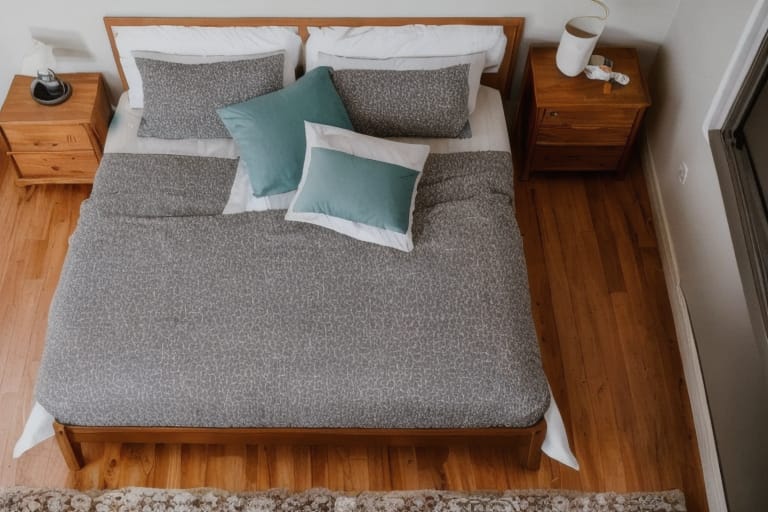
Steps to Help Prevent a Down Comforter From Yellowing
Proper maintenance and care make a big difference in a down comforter’s lifespan and appearance. Here are some key prevention tips:
Wash Regularly
Don’t wait until dinginess sets in. Wash down comforters 2-3 times per year, or more often if you sweat excessively or have oily skin/hair.
Use a mild detergent on a gentle cycle. Dry thoroughly on low heat.
Avoid bleach and fabric softeners as they can degrade fabric over time.
Store Properly
Allow the comforter to fully dry after washing if planning to store it away in the off-season. Any retained moisture can promote mold, mildew and faster deterioration.
Store folded loosely in a breathable cotton cover or bag. Avoid compressing or tightly packing to retain loft.
Keep stored down comforters in a cool, dry place like a closet until needed.
What Are the Benefits of Regular Down Comforter Cleaning?
We touched on washing basics already. But what are the helpful outcomes of keeping to a washing routine?
Prolong Lifespan
Regular cleaning removes oils and irritants trapped within the down before heavy soiling and yellow stains set in. This helps extend the lifespan of your comforter by years.
Maintain Freshness
Musty odors from sweat, humidity or ambient cooking smells can accumulate in bedding. A refresh in the wash removes these unwanted scents leaving your bed crisp, clean and pleasant-smelling.
Choosing the Right Down Comforter Based on Needs
With so many down comforter varieties available, the options can get overwhelming. Assess these factors to narrow things down:
Bed Size
Select a comforter approximately 20 inches longer and wider than your mattress so it adequately covers the bed with an overhang.
Seasonality
Warmth needs vary in summer versus winter. Lightweight styles work well for year-round use in many climates too.
Fill Power
Higher fill power down (600-900) provides exceptional warmth for cold sleepers without extra weight. Those who run hot may prefer lower fill power around 300-500.
Style Ideas for Decorating with Yellowed Down Bedding
Do you have a yellowed down comforter with years of use left? Work around its faded color with smart decor.
Color Scheme Coordination
Accent pillows, throws and sheets in shades like ivory, cream or light tan seamlessly blend with your comforter’s patina. Crisp whites and patterns disguise discoloration too.
Layer Light Covers Over It
Placing a light duvet, quilt or coverlet on top masks yellowed down beautifully. Bonus – it protects your investment and adds extra warmth.
Sustainable and Eco-Friendly Down Comforter Options
For those concerned about environmental impact, “green” down comforter brands utilize mindful sourcing and manufacturing practices such as:
- Ethically harvesting premium downs during natural molting periods
- Using OKEO-TEX certified fabric dyes safe for people and planet
- Locally sourcing materials near manufacturing centers
- Following responsible protocols to reuse or repurpose production scrap
Going green may cost a bit more upfront. But sustainable goods often last longer with less processing involved. It’s a worthwhile investment for many.
Some top environmentally conscious down brands include Snowe, Buffy and Parachute Home.
Down Comforter Brand Recommendations
With hundreds of choices on the bedding market, where to start? Here are five reputable brands offering quality down comforters worth considering:
1. Brooklinen Down Comforter
- 700 fill power white goose down
- 400 thread count cotton shell
- OKEO-TEX certified dyes
- Light, warm and breathable
2. Snowe Down Comforter
- Premium goose down up to 700 fill power
- Ethically sourced via independent audit
- 500 thread count cotton sateen shell
- Ultra-soft with baffle box stitching
3. Buffy Cloud Down Comforter
- Made from 100% recycled materials
- 300 single-origin white duck down
- 400 thread count shell
- Stay-dry lining to resist humidity
4. Pottery Barn Down Comforter
- Available in variety of patterns
- Shell backing helps repel allergens
- 550 fill power goose down
- Corner loops to secure duvet
5. The Company Store Legends Luxury Comforter
- Prized for exceptional warmth
- 70 oz fill weight with 700 fill power down
- Woven damask striped shell
- 280 thread count, 100% cotton
With rave reviews across the board, any choice among these five establishes a splendid foundation to build the bedding ensemble of your dreams while avoiding premature yellowing.
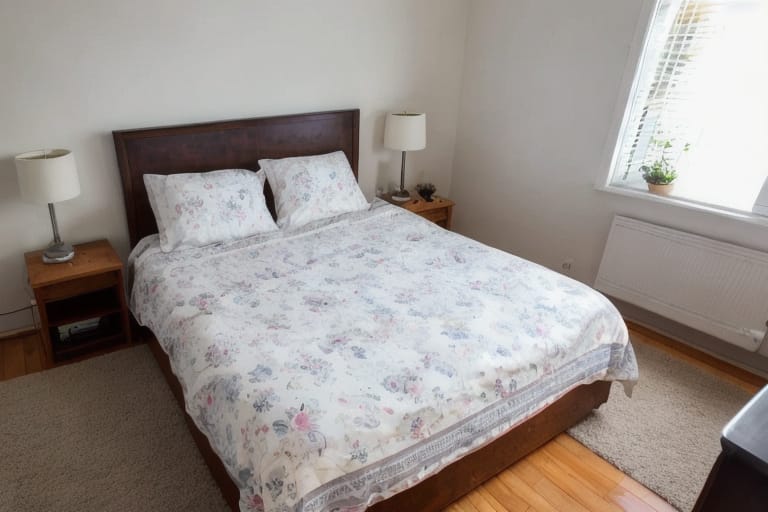
Frequency Asked Questions
Still have lingering questions about why down comforters turn yellow and how to combat it? These FAQs offer additional insights:
Why does down turn yellow so fast compared to down alternative?
Real duck or goose down contains natural oils that oxidize over time causing pale yellow discoloration. Synthetic fills like polyester lack these oils so resist yellowing from age far better. But down’s super-soft feel and unbeatable warmth make it a top choice still for many.
Does sunlight remove yellow stains from down comforters?
It depends. Mild sun exposure helps lift some pigment staining. But too much UV radiation actually degrades fabric and causes irreversible fading. Filter bright light with semi-sheer curtains. And avoid direct sun beating down for long periods.
Can you put a down comforter in the dryer?
You can, but proceed carefully. Excess heat damages down, shortening its lifespan. Use the no- or ultra-low heat setting. And add a few tennis balls to help redistribute fill and prevent clumping. Line or air drying is gentler when possible.
How often should down bedding be professionally cleaned?
Every 5 years or so, consider sending out larger items like comforters and pillows for deep-cleaning by pros with commercial equipment. In between, homemade washings every 2 years (or more often as needed) sufficiently refreshes down. Less cleaning preserves the loft and fill best.
Why does my body oil stain the down more than my husband’s?
Every person’s body chemistry is unique. The pH of your sweat and oils interact differently with fabrics. Things like hormones, diet, skincare regimen and medications influence staining potential too. Using mattress pads and changing sheets weekly keeps most oils contained away from inner comforter fill.



